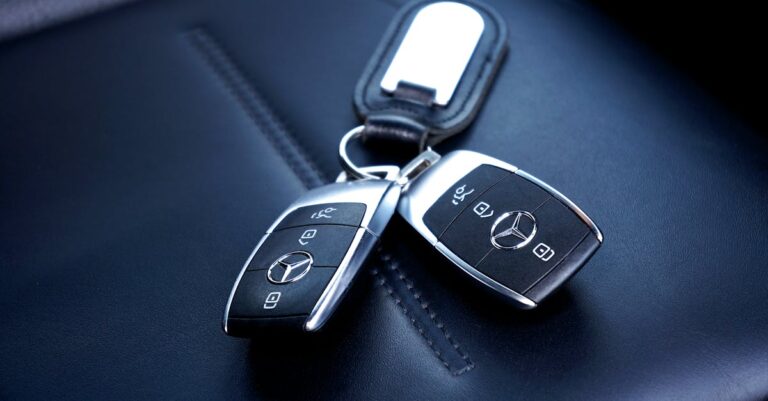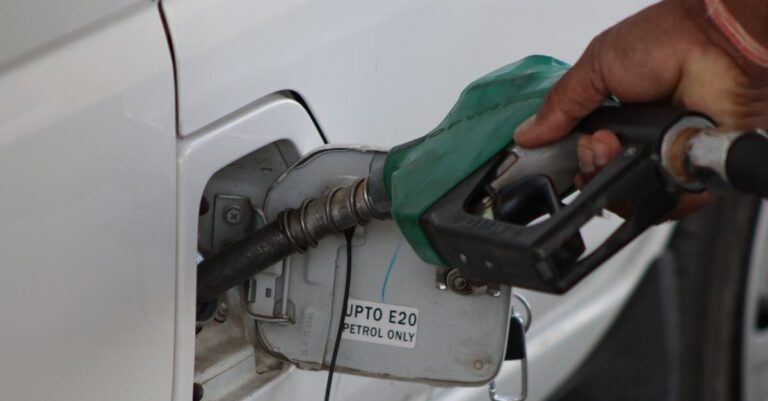Table of Content
- Automatic vs Manual Transmission: Choosing Your Drive
- Understanding the Basics: What’s Under the Hood?
- The Driving Experience: Feel vs. Convenience
- Performance and Fuel Efficiency: Does One Really Outperform the Other?
- Cost Considerations: Upfront Price and Long-Term Maintenance
- Which Transmission is Right for You? Making the Decision
- The Future of Transmissions: Are Manuals Disappearing?
- Conclusion: The Final Shift
- FAQs: Your Transmission Questions Answered
Automatic vs Manual Transmission: Choosing Your Drive
So, you’re in the market for a new (or new-to-you) car, huh? Awesome! But beyond the color, the make, and whether it has that killer sound system, there’s a fundamental choice lurking under the hood: automatic or manual transmission? It might seem like a simple decision, especially with automatics dominating the roads these days. But hold on a second! This choice significantly impacts how you feel when you drive, how much control you have, and even potentially your wallet. It’s not just about convenience; it’s about the very essence of your connection to the machine.
Think of it like choosing between cooking a meal from scratch versus ordering takeout. One gives you total control, a sense of accomplishment (and maybe a bit more mess), while the other is effortless and gets the job done reliably. Neither is inherently “better,” but they offer vastly different experiences. We’re going to dive deep into the world of gears, clutches, and torque converters to help you figure out which driving style truly suits you. Are you ready to shift your perspective?
Understanding the Basics: What’s Under the Hood?
Before we start debating the pros and cons, let’s get a handle on what these things actually do. Both manual and automatic transmissions have the same core job: they take the power generated by your engine and translate it into rotational force for the wheels, allowing the car to move at different speeds. Your engine operates efficiently only within a certain range of revolutions per minute (RPMs). The transmission uses a set of gears (or sometimes, clever belts and pulleys) to keep the engine in that sweet spot, whether you’re crawling in traffic or cruising on the highway.
How Does a Manual Transmission Work? (The Three-Pedal Dance)
Ah, the manual transmission, often called a “stick shift” or “standard.” This is the OG, the one that requires a bit more involvement from you, the driver. You’ve got three pedals down there: accelerator (gas), brake, and the all important clutch pedal on the far left. You also have the gear shifter, usually sprouting from the center console.
Here’s the gist: To change gears, you press the clutch pedal down with your left foot. This disconnects the engine from the transmission momentarily. Think of it like pausing the power flow. While the clutch is down, you use the gear shifter to select the next desired gear (higher for more speed, lower for more power or slowing down). Once the gear is selected, you smoothly release the clutch pedal while simultaneously applying the right amount of gas with your right foot. This reconnects the engine to the transmission in the new gear ratio. It’s a coordinated dance between your hands and feet! Inside the gearbox, you’re physically moving forks that slide gears into place along shafts. It’s a direct, mechanical connection that you control entirely.
How Does an Automatic Transmission Work? (The Set-and-Forget System)
Now, let’s look at the automatic transmission, the reigning champion of convenience. Notice something missing? Yep, no clutch pedal! You typically just have Park (P), Reverse (R), Neutral (N), and Drive (D), maybe with some options for lower gears (L, 1, 2) or sport modes (S).
Instead of a clutch you operate, traditional automatics use a nifty device called a torque converter. Imagine two fans facing each other inside a sealed, fluid filled housing. One fan (the impeller) is connected to the engine, and the other (the turbine) is connected to the transmission. As the engine spins the impeller, it churns the transmission fluid, causing the turbine to spin, thus transferring power. It allows the engine to idle while the car is stopped in Drive without stalling, unlike a manual where you’d have to push the clutch in. Gear changes happen, well, automatically! The car’s computer monitors speed, engine load, and throttle position, then uses hydraulic pressure or electronic solenoids to engage different planetary gear sets within the transmission, shifting up or down as needed. More modern automatics, like Continuously Variable Transmissions (CVTs) and Dual Clutch Transmissions (DCTs), work a bit differently (CVTs use belts and pulleys for infinite ratios, DCTs use two clutches for lightning fast shifts), but the core principle remains: the car handles the shifting for you.
The Driving Experience: Feel vs. Convenience
Okay, now that we know the ‘how,’ let’s talk about the ‘feel.’ This is where personal preference really kicks in. How do you want your daily drive to feel? Engaged and connected, or smooth and effortless?
Manual Transmission: The Engaging Connection
Driving a manual is often described as being more “connected” to the car and the road. You’re not just steering and braking; you’re actively managing the engine’s power delivery. It requires more attention, more skill, and a deeper understanding of how the car works.
Pros: Control, Fun Factor, Engine Braking
The biggest draw for many manual enthusiasts is control. You decide exactly when to shift. Want to hold a lower gear for longer climbing a hill or for a burst of acceleration? You can do that. Want to downshift smoothly coming into a corner for better balance? Your call. This level of control can translate into a significant fun factor, especially on twisty roads or for drivers who simply enjoy the mechanics of driving. There’s a certain satisfaction in executing a perfect, smooth shift. Another benefit is effective engine braking. By downshifting, you can use the engine’s resistance to help slow the car down, saving wear on your brakes, particularly useful on long downhill stretches.
Cons: Learning Curve, Traffic Woes, Physical Effort
Let’s be real, driving a stick shift isn’t second nature for everyone. There’s a definite learning curve. Stalling the engine, jerky starts, and grinding gears are rites of passage for most learners. It takes practice to get smooth. And then there’s traffic. Stop and go traffic can turn the engaging dance of clutching and shifting into a tedious chore for your left leg and left arm. It demands constant attention and can be genuinely tiring. This constant operation also means more physical effort compared to an automatic. While not strenuous for most, it can be a factor for drivers with certain physical limitations or those who simply prefer maximum comfort.
Automatic Transmission: The Smooth Operator
Automatics are all about making driving easier. They handle the complexities of gear selection, freeing up your attention (and your left foot and right hand) for other aspects of driving, like navigating or enjoying the ride.
Pros: Ease of Use, Less Stress in Traffic, Wider Availability
The number one advantage is undeniable: ease of use. Get in, put it in Drive, and go. It’s simple, intuitive, and requires far less coordination, making it accessible to virtually anyone with a driver’s license. This simplicity translates directly into less stress in traffic. Crawling along at 5 mph? No problem. Just manage the gas and brake. Your left leg can relax. Another practical advantage is wider availability. The vast majority of new cars sold today, especially in North America, come with automatic transmissions. This means you have a much broader selection of vehicles to choose from if you opt for an automatic.
Cons: Less Engaging, Potential for Higher Repair Costs?
The flip side of ease is often a feeling of detachment for some drivers. Automatics can feel less engaging. You’re more of a passenger managing speed and direction rather than an active participant in the mechanics. While modern automatics are much better than older ones, some can still feel like they shift too early or too late for your liking, leading to a less satisfying driving dynamic for enthusiasts. Historically, automatics were also seen as having higher repair costs due to their complexity. While this can still be true (a major automatic transmission repair can be very expensive), modern automatics are generally quite reliable. We’ll touch more on costs later, but it’s a perception that persists.
Performance and Fuel Efficiency: Does One Really Outperform the Other?
For years, the narrative was clear: manuals were faster and more fuel efficient. But technology marches on, and the lines have blurred significantly. So, what’s the score today?
Shifting Gears on Performance
Back in the day, automatics were often sluggish, sapping engine power with their inefficient torque converters and slow shifts. A skilled driver could always launch a manual car quicker and row through the gears faster. Manuals gave you direct control for optimal acceleration.
However, modern automatics, especially high performance ones like Dual Clutch Transmissions (DCTs), have changed the game. DCTs can shift gears in milliseconds, far faster than any human can manage with a clutch pedal and shifter. Many of the world’s fastest production cars now use sophisticated automatic transmissions. Even conventional automatics have improved dramatically, with more gears (8, 9, even 10 speeds!) and smarter electronic controls keeping the engine right in its powerband. While a well driven manual can still feel subjectively quicker and more responsive in some situations due to the direct connection, in terms of raw acceleration numbers, high tech automatics often have the edge now.
The Fuel Economy Debate: Old Myths vs. New Realities
This is another area where conventional wisdom needs an update. Historically, manuals held a clear advantage in fuel economy. Automatics, particularly older 3 or 4 speed units with power sapping torque converters, were simply less efficient at transferring power.
Today? It’s a much closer race, and often, automatics win. Why the change? Several reasons. Modern automatics have many more gear ratios, allowing the engine to operate at lower, more efficient RPMs during cruising. Lock up torque converters eliminate slip at higher speeds, improving efficiency. And Continuously Variable Transmissions (CVTs), while sometimes criticized for their driving feel, are designed specifically to keep the engine at its most efficient operating speed constantly. Many modern cars achieve better official MPG ratings with their automatic or CVT options compared to their manual counterparts. That said, a careful driver *can* potentially squeeze slightly better real world mileage out of a manual by employing hypermiling techniques (like shifting early, coasting in neutral – though the latter isn’t always recommended), but for the average driver, the automatic often holds the efficiency edge on paper and in practice now.
Cost Considerations: Upfront Price and Long-Term Maintenance
Driving fun and fuel economy are important, but what about the impact on your bank account? Let’s break down the costs associated with each transmission type.
Initial Purchase Price: Stick Shift Savings?
Traditionally, choosing a manual transmission meant saving money on the initial purchase price of a car. Automatics were typically offered as an optional extra, often adding $1,000 to $2,000 (or sometimes more) to the sticker price. For budget conscious buyers, this could be a significant saving.
While this is still often true, the trend is shifting. As manuals become rarer, sometimes they are only offered on specific trim levels (often sporty or base models). In some niche cases, a manual might not even be the cheaper option if it’s bundled with other features. However, as a general rule, if a specific model offers both, the manual version is usually slightly less expensive upfront. But the difference might not be as substantial as it once was, and you need to compare specific models and trims.
Maintenance and Repair Costs: Automatic Complexity vs. Manual Clutch
This is where things get interesting. Manual transmissions are mechanically simpler than automatics. They have fewer moving parts overall. Their main wear item is the clutch, which typically needs replacement every 50,000 to 100,000 miles (or more, depending heavily on driving style – abuse it, and it’ll wear out much faster!). Clutch replacement can cost several hundred to over a thousand dollars, depending on the car. Other potential manual issues are less common but might involve synchronizers or bearings.
Automatic transmissions, especially traditional hydraulic ones, are far more complex. They have intricate valve bodies, planetary gearsets, bands, clutches, and the torque converter. While generally reliable, when things go wrong, repairs can be significantly more expensive than a manual clutch job. A full automatic transmission rebuild or replacement can easily run into the thousands of dollars. Regular fluid changes are also crucial for automatic longevity, an often overlooked maintenance item. However, CVTs and DCTs have their own potential issues and repair costs, sometimes rivaling traditional automatics. So, while a manual *might* be cheaper to maintain over the long haul due to simpler potential repairs, a catastrophic failure in an automatic will almost certainly cost more than replacing a clutch. It’s a bit of a gamble either way, but the potential ceiling for repair costs is generally higher with an automatic.
Which Transmission is Right for You? Making the Decision
Alright, we’ve covered the mechanics, the feel, the performance, and the cost. Now comes the moment of truth: which one should you choose? There’s no single right answer, but thinking about your priorities will guide you.
Consider Your Driving Style and Needs
Are you someone who truly loves the act of driving? Do you enjoy feeling connected to the machine, controlling the power, and maybe even taking your car to a twisty road or track day occasionally? If engagement, control, and the “fun factor” are high on your list, a manual transmission might be your soulmate. It rewards skill and involvement.
Conversely, do you see driving more as a means to an end? Is your priority comfort, convenience, and minimizing stress, especially during commutes? Do you frequently drive in heavy traffic? If ease of use and a relaxed driving experience are paramount, an automatic transmission is likely the better fit. It simplifies the driving task significantly.
Think About Your Commute and Environment
Where will you be doing most of your driving? If your daily commute involves bumper to bumper traffic on the freeway, working a clutch pedal constantly can become incredibly tiresome. In this scenario, the effortless nature of an automatic is a huge plus.
If you live in a hilly area, a manual can offer better control on steep grades, both ascending (choosing the right gear) and descending (using engine braking). However, starting on a steep hill from a stop in a manual requires a bit of skill (using the handbrake or mastering heel and toe coordination) that automatics handle automatically. If your driving is mostly on open roads or highways with minimal traffic, the potential downsides of a manual (traffic fatigue) are less relevant, making it a more appealing option based purely on driving preference.
The Future of Transmissions: Are Manuals Disappearing?
Let’s address the elephant in the room: the manual transmission is becoming increasingly rare. Automatics dominate sales globally, and the reasons are multifaceted. Strict emissions regulations often favor the precise control offered by automatics. The development of advanced driver assistance systems (like adaptive cruise control and automatic emergency braking) often integrates better with automatic transmissions. And, frankly, fewer people are learning to drive stick, reducing demand.
Furthermore, the rise of electric vehicles (EVs) changes the equation entirely. Most EVs don’t have multi speed transmissions in the traditional sense at all, as electric motors produce instant torque across a wide RPM range. They typically use a simple single speed reduction gear. As electrification becomes more prevalent, the debate between traditional automatic and manual transmissions may become largely academic for mainstream vehicles.
Does this mean the manual is doomed? Not necessarily, at least not immediately. There will likely always be a niche market for enthusiasts who appreciate the engagement of a manual, particularly in sports cars and certain enthusiast focused models. But for the average daily driver, the automatic (in its various forms) is clearly the present, and combined with electrification, represents the dominant future.
Conclusion: The Final Shift
Choosing between an automatic and a manual transmission boils down to a very personal decision about what you value most in your driving experience. There’s no longer a clear winner in terms of performance or fuel economy; modern automatics have largely caught up or surpassed manuals in those metrics. The real difference lies in the feel and the function.
If you crave connection, control, and the simple mechanical joy of rowing your own gears, and you don’t mind the extra effort (especially in traffic), the manual transmission offers a rewarding and engaging experience that automatics struggle to replicate. It’s about being an active participant.
If your priorities lean towards convenience, comfort, ease of use, and a stress free commute, the automatic transmission is the undisputed champion. It simplifies driving, handles traffic effortlessly, and is available in a much wider variety of vehicles. It’s about relaxing and letting the car do the work.
Think about your daily drives, your driving personality, your budget, and maybe even take both types for a test drive if you can. Ultimately, the best transmission is the one that makes you enjoy being behind the wheel, whether that means dancing on three pedals or simply putting it in Drive and cruising.
FAQs: Your Transmission Questions Answered
- Is learning to drive a manual transmission difficult?
It definitely has a steeper learning curve than an automatic. You need to coordinate the clutch, gas, and shifter. Most people stall it a few times and have some jerky starts initially. However, with a bit of practice (a few hours to a few days for the basics), most drivers can become proficient. It’s a skill that requires patience but is very achievable.
- Are manual cars really cheaper to maintain in the long run?
It’s debatable and depends on luck and driving style. Manuals are simpler, and their main wear item, the clutch, is less expensive to replace than a major automatic transmission overhaul. However, modern automatics are quite reliable if maintained properly (regular fluid changes are key!). If an automatic transmission *does* fail catastrophically, it will likely cost much more to fix than anything on a manual. So, manuals have lower potential repair costs for common issues, but automatics might be reliable for a long time if cared for.
- Do manual transmissions get better gas mileage than automatics?
Not necessarily anymore. While this used to be true, modern automatic transmissions (especially CVTs and those with many gears like 8 10 speeds) are often more fuel efficient than their manual counterparts according to EPA ratings. They can keep the engine in its most efficient RPM range more precisely than most drivers can with a manual. However, driving style has a huge impact, and a skilled, efficiency focused driver *might* still eke out slightly better real world MPG in a manual.
- Are manual cars going to disappear completely?
They are certainly becoming much rarer in new cars, especially mainstream models. Electrification is also phasing out traditional transmissions altogether. However, they likely won’t disappear completely in the near future. There’s still demand from enthusiasts, particularly for sports cars and some off road vehicles. Think of them as becoming a niche product rather than vanishing overnight.
- What is a DCT (Dual Clutch Transmission) and is it automatic or manual?
A DCT is essentially an automated manual transmission. It uses two separate clutches, one for odd numbered gears and one for even numbered gears. This allows the next gear to be pre selected, resulting in incredibly fast shifts. You operate it like an automatic (no clutch pedal, usually P R N D modes), but mechanically it functions more like two manuals working together electronically. They offer performance advantages but can sometimes feel less smooth than traditional automatics at low speeds and may have their own specific maintenance considerations.









